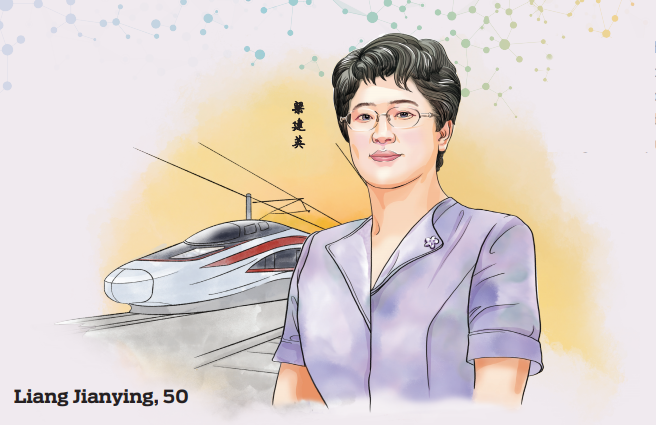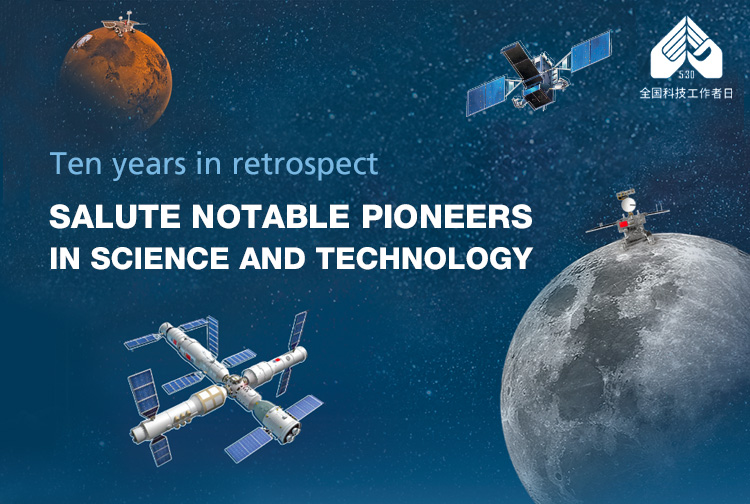Liang Jianying, 50

Liang Jianying, 50 [Illustration by Yang Liu and Li Xiaotian]
The vice-president and chief engineer of China Railway Rolling Stock Corporation Qingdao Sifang, the company behind the Hexie and Fuxing bullet trains, which have propelled China to the position of a global powerhouse in highspeed trains.
Liang and her team received the Special Prize of the 2015 State Scientific and Technological Progress Award for developing the Beijing-Shanghai highspeed railway network. She is currently the director of the National Innovation Center of High Speed Train.
From a common technician to the chief engineer behind some of China's biggest technological innovations in transportation, Liang Jianying said she was fortunate to have worked in a time of rapid development in China's high-speed railway sector, which has provided ample opportunities for her team's ingenuity and efforts to shine.
In 2004, China published a plan to greatly expand the nation's railway system, thus kick starting the era of highspeed rail. China had to import high-speed trains at that time, and Liang soon realized the importance of building innovation capability and being self-sufficient in science and technology.
Two years later, Liang was tasked with designing her first 300 kilometers per hour high-speed train. "The shoulders of giants can be shaky and hard to stand on, we have to become giants ourselves," she said.
But designing a bullet train is no easy task. A single train can contain over 500,000 components, and improving its speed from 200 to 300 km/h means overcoming numerous technical obstacles.
The challenge did not faze Liang, and by December 2007, she created China's first high-speed train with a speed between 300 to 350 km/h. In 2010, she broke the world speed record at the time with CRH380A, a bullet train from the Hexie series with an operation test speed of 486.1 km/h.
"China is a vast country with huge traffic demand and complex geography. With so much support from my country, if I was not able to create the best train in the world, then I would be letting the nation down," Liang said. This is the belief that compelled Liang to achieve excellence throughout the years.
In 2017, the new and improved Fuxing series bullet train entered service, gradually becoming the mainstay of China's high-speed rails. As of the end of 2021, there were 1,191 Fuxing trains in operation and they had safely served over 1.37 billion passengers across approximately 1.36 billion kilometers.
On July 20, 2021, after five years of hard work by Liang and her team, China's first 600 km/h high-speed magnetic levitation train made its debut in Qingdao, Shandong province. It is one of the fastest examples of ground-based public transportation in the world to date.
"I believe that in the foreseeable future, there will be more Chinese high-speed trains with independent intellectual property debuting new styles and speeds," she said.








